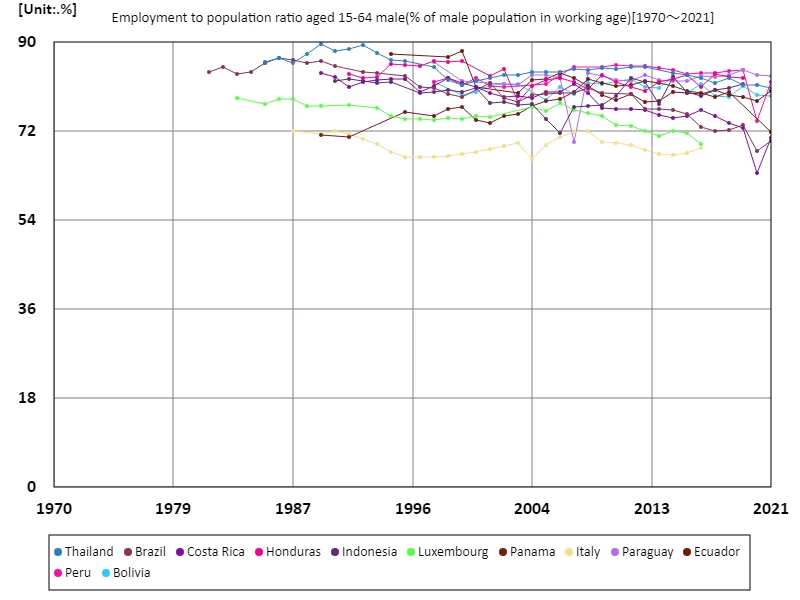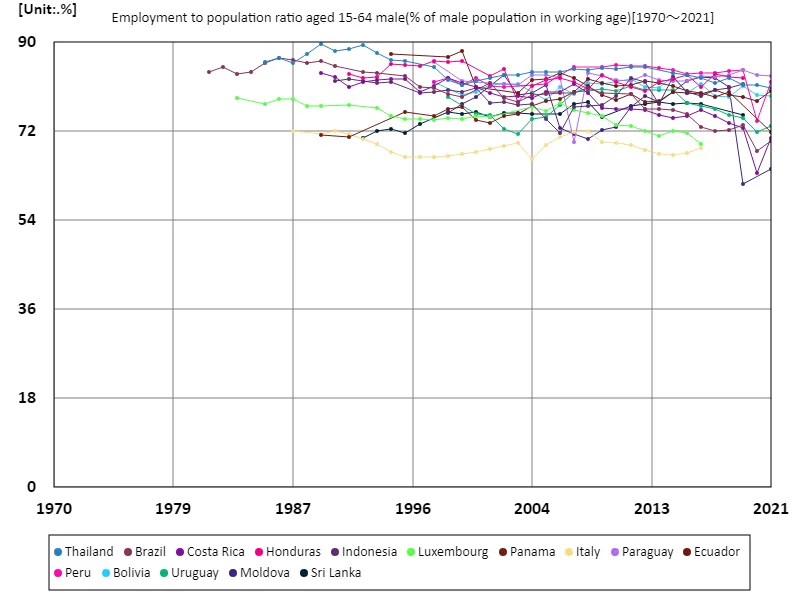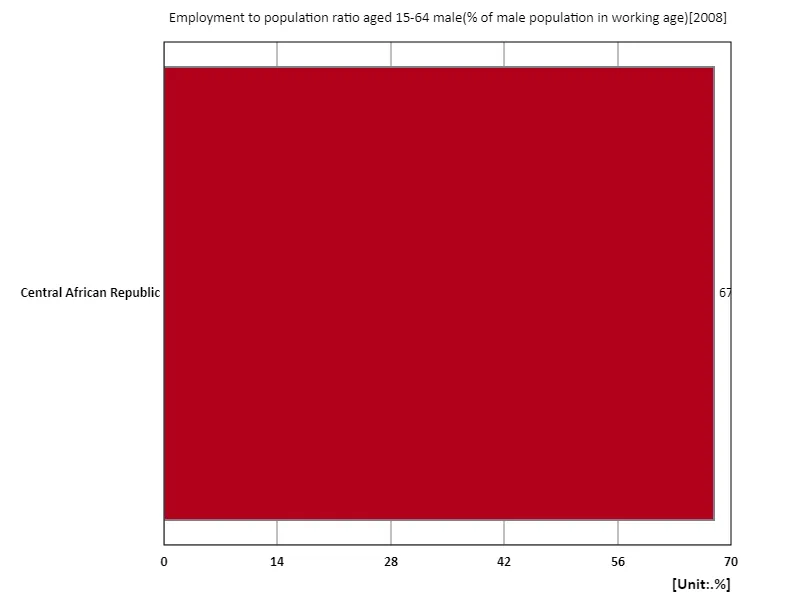- Abstract
- Men aged 15-64 years, employment rate as a percentage of the working-age male population
- Employment rate for men aged 15-64 (percentage of working-age male population) (worldwide)
- Men aged 15-64 years, employment rate as a percentage of the working-age male population (world, latest year)
- Men aged 15-64 years, employment-to-population ratio (percentage of working-age male population) (region, latest year)
- Reference
Abstract
The data, which shows that Paraguay’s employment rate for men aged 15-64 in 2021 is 83%, highlights several important economic and social characteristics. First, Paraguay has one of the higher employment rates in Latin America, which suggests a relatively stable labor market compared to other countries in the region. Over the past few decades, Paraguay has experienced economic growth while achieving successes such as reduced poverty rates and increased employment. In particular, major industries such as agriculture and services are creating jobs and contributing to the expansion of the labor market. However, a high employment rate does not necessarily mean higher wage levels or improved working conditions, and securing quality employment and raising wages remain important challenges. Therefore, to maintain Paraguay’s high employment rate, there is also a need to focus on improving the quality of jobs.
Men aged 15-64 years, employment rate as a percentage of the working-age male population
The employment rate for men aged 15-64 in Thailand reached a record high of 89.6% in 1989 and remains at a high level of 89.9% today, symbolizing the stability and growth of Thailand’s labor market. From the late 1980s to the early 1990s, Thailand experienced rapid economic growth, with the expansion of manufacturing and export-led industries creating jobs. The high employment rate during this period reflects Thailand’s industrial diversification and the absorptive capacity of the labour market. Since the 1990s, Thailand has experienced economic upheaval due to the Asian currency crisis and the advancement of globalization, but the flexibility of its labor market and its policy responsiveness have enabled it to maintain a certain level of employment. The current employment rate of 89.9% indicates that Thailand’s economy remains strong in terms of employment capacity and its labour market is stable. However, future challenges will include the need to improve the quality of the labor market and respond to an aging society.


The maximum is 89.6%[1989] of Thailand, and the current value is about 89.9%
Employment rate for men aged 15-64 (percentage of working-age male population) (worldwide)
Thailand’s employment rate of 89.6% for men aged 15-64 in 1989 reflects the momentum of its economic growth and the strength of its labor market at the time. During this period, Thailand experienced rapid economic growth and created many jobs through the expansion of its manufacturing industry and an export-led economic strategy. Thailand’s high employment rate is due in particular to industrialization and infrastructure development. Subsequently, the 1997 Asian currency crisis and fluctuations in the global economy temporarily destabilized the employment situation, but Thailand subsequently recovered and experienced renewed economic growth, and has since maintained a relatively high employment rate. The current employment rate of 89.9% is roughly the same as the peak level, demonstrating the strength and stability of Thailand’s labor market. However, a high employment rate does not necessarily reflect the health of the overall economy, as other factors such as job quality, wage levels and labour market flexibility must also be taken into account. In particular, future challenges will include responding to structural changes in the labor market, the aging population, and technological innovation.


The maximum is 89.6%[1989] of Thailand, and the current value is about 89.9%
Men aged 15-64 years, employment rate as a percentage of the working-age male population (world, latest year)
According to 2021 data, Paraguay has the highest employment rate for men aged 15-64, at 83%. This indicates that Paraguay has maintained a relatively high labor force participation rate, which can be attributed mainly to job creation in agriculture and the service sector. The average employment rate is 71.6%, suggesting that many countries have maintained a certain degree of labour market stability, although regional differences in economic conditions and policies play a role. The total of 1.15k% is an aggregation of country-level data that represents the sum of the employment rates for individual countries and is useful for understanding overall trends. Over the past few decades, amid economic globalization and technological innovation, employment rates have tended to vary, but national economic policies and labor market reforms play an important role. In particular, in developed countries, the ageing population is making it difficult for employment rates to stabilize, while in developing countries, rapid economic growth is contributing to an increase in employment opportunities.


The maximum is 83% of Paraguay, the average is 71.6%, and the total is 1.15k%
Men aged 15-64 years, employment-to-population ratio (percentage of working-age male population) (region, latest year)
According to 2008 data, the Central African Republic has the highest employment rate in manufacturing for men aged 15-64 at 67.9%, and the average and total are also 67.9%, indicating that the overall employment situation is converging at a certain level. The high employment rate in the Central African Republic indicates that the manufacturing industry serves as a major source of employment and plays a key role in the local economy. This figure reflects the manufacturing sector’s importance in the labour market and its role as a major contributor to job creation, particularly in developing countries. However, countries with high manufacturing employment rates are not necessarily seeing greater overall economic development or improved working conditions. Economies that depend on manufacturing are prone to challenges in terms of international competitiveness, technological innovation, and improvement of working conditions, and further industrial diversification and technological innovation are required to achieve future growth and create sustainable jobs.


The maximum is 67.9% of Central African Republic, the average is 67.9%, and the total is 67.9%



Comments